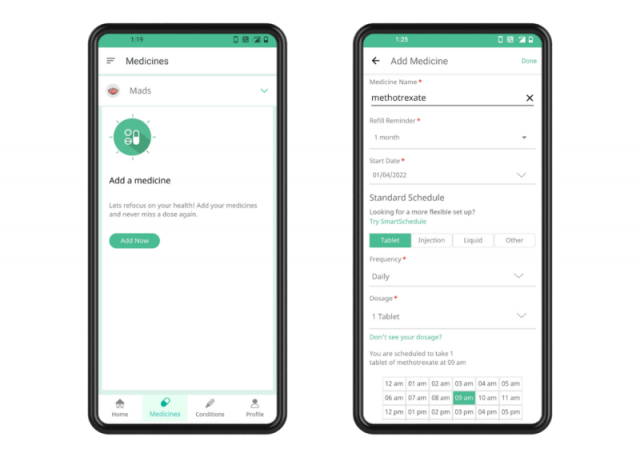The process and journey of managing Lupus Prednisone medication is described by a health blogger and author living with Lupus.
Tapering off Prednisone can be a real challenge. Personally, my body never seems to remember how to do it, no matter how many times I’ve been through it!
Of course, the higher the dose and the longer I’ve been on steroids, the trickier it can be. I remember all too well trying to taper off 60 milligrams years ago. Even getting below 20 mg a day seemed to be a monumental feat. My body just wasn’t ready to dip to 17.5 mg!
I also remember being on as low a dose as 2.5 mg daily, with complete disease management. But then a flare would hit, and my doctor would increase my dosage to 10 mg daily. That increase often did the trick to manage my flare, but tapering off slowly would take months. My doctor was never in a rush, and we would go 2.5 mg at a time. I might be stuck at 5 mg one day, and 2.5 mg the next for a month. Then we’d attempt a decrease of 2.5 mg. I always tried to find success in the baby steps, even if just for 2.5 mg. Less Prednisone is, well, less Prednisone!
No matter how slowly I taper, or how smoothly it goes, I can’t help but get a little nervous when the day arrives that I have to start a lower dose. I used to get pretty anxious about the whole process, because I so desperately wanted my body to cooperate. I longed to be able to tolerate the lower dose. But today I’ve learned to balance that feeling of desperation with the knowledge that tapering, just like so many things in life, isn’t an all or nothing thing. Here are three thoughts of consolation that give me the courage to try that lower dose, to split those pills, and to bravely withstand steroid withdrawal:
1) If it doesn’t work, I can always go back up.
My doctor has never been unreasonable. If a treatment isn’t working, he tweaks it. If my disease is getting worse, he deals with it. So, while he may direct me to taper off Prednisone, I know he’d never leave me floundering if my body didn’t respond as hoped. If I need to go back up, he makes the call. I’ve learned that while he strives to use the medications as judiciously as possible, he attempts to keep me as comfortable as he can along the way. And through his tutelage, I’ve come to realize that just because I’m not successfully able to taper one week, doesn’t mean my body won’t be game the next. I think “tapering off steroids” should come with a disclaimer: Patience required!
2) My doctor believes in me
It may sound silly, but just knowing that the doctor believes that my body may be capable of tapering off a dose helps me make the move. I know it’s not a perfect science, and there’s no guarantee that my body will respond to the medication as he thinks it will. But I still appreciate the vote of confidence. In my opinion, this is where positive thinking comes in… not so much in willing your disease activity to subside, but rather, in finding the courage (from the confident plan put forth by your doctor) to take steps that will allow you to keep moving forward in the management of your disease. Whether it’s reducing a medication to stave off crummy side-effects, starting a heavy hitting drug that could finally get your disease under control, or making monumental changes at home or work that will ideally improve your life with Lupus… every little bit of encouragement helps!


3) I know what to look for
By now, I’m a champ at assessing steroid withdrawal, especially when I utilize a tracking system, like the KnowYourMeds app, to keep tabs on the process. The first day I go down on my dose, I’m going to feel crummy. The second day, still crummy, but no worse or maybe even the slightest bit better. The third day, better still, and so on. Ideally, the increase in symptoms (flu-like symptoms, increased fatigue, joint pain, fever, etc.) should incrementally subside as the days march on from the start of the lower dose. The key here is that they get better, not worse. So, it’s my job to check my tracking app to see how much I’ve been taking and for how long, and to communicate back to my doctor if my body isn’t reacting as planned. As long as I’m honest and open about the severity and frequency of my symptoms, my doctor can successfully determine whether or not the change in medication is working. Knowing what to expect, and then using the tools I’ve been given to determine if those expectations are being met, makes it so much easier to take that first step!
Note: my doctor and I usually allow 2-7 days before making an assessment of the success (or failure) of my Prednisone tapering. Please consult your doctor for your own plan of attack!


